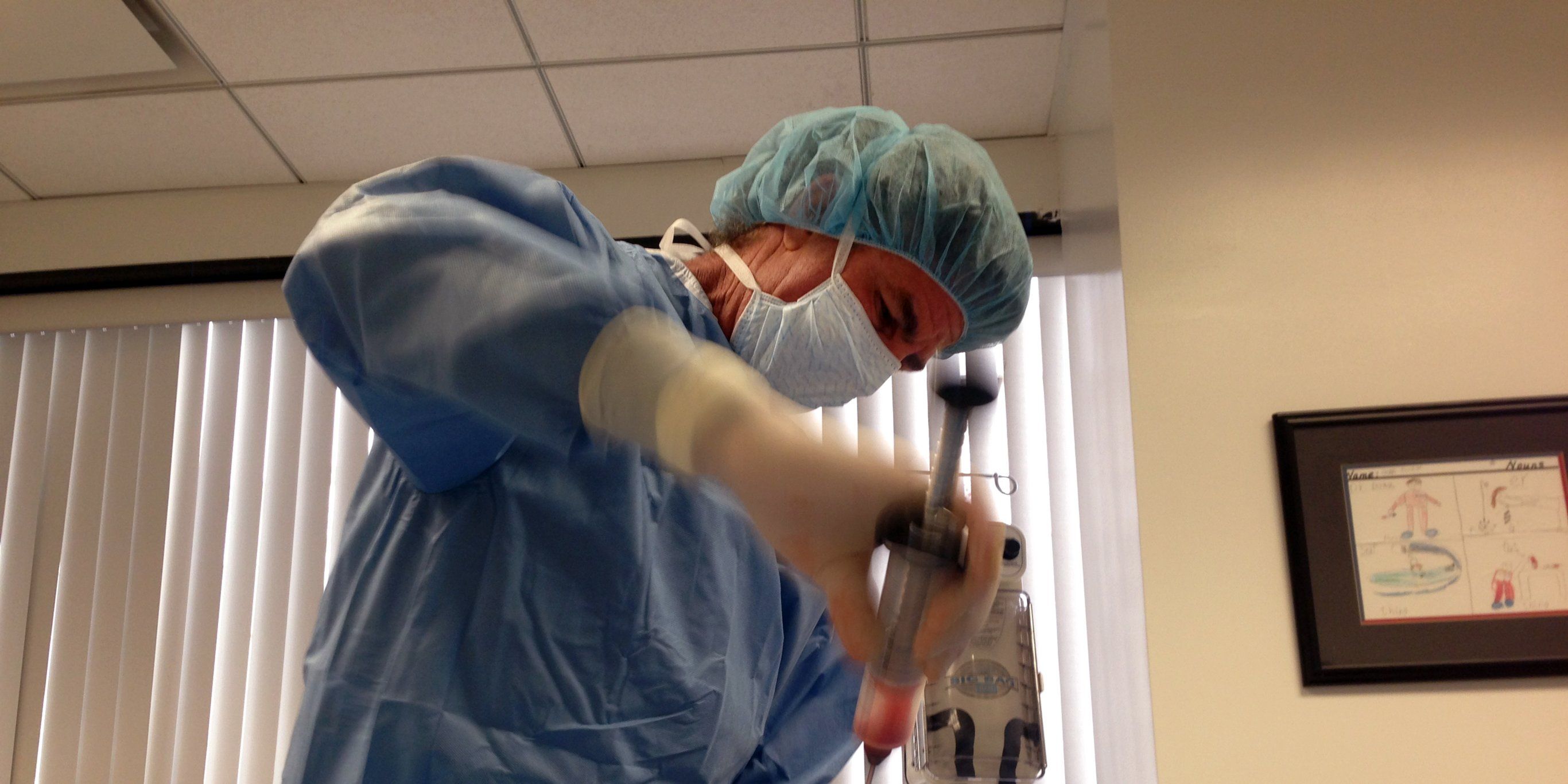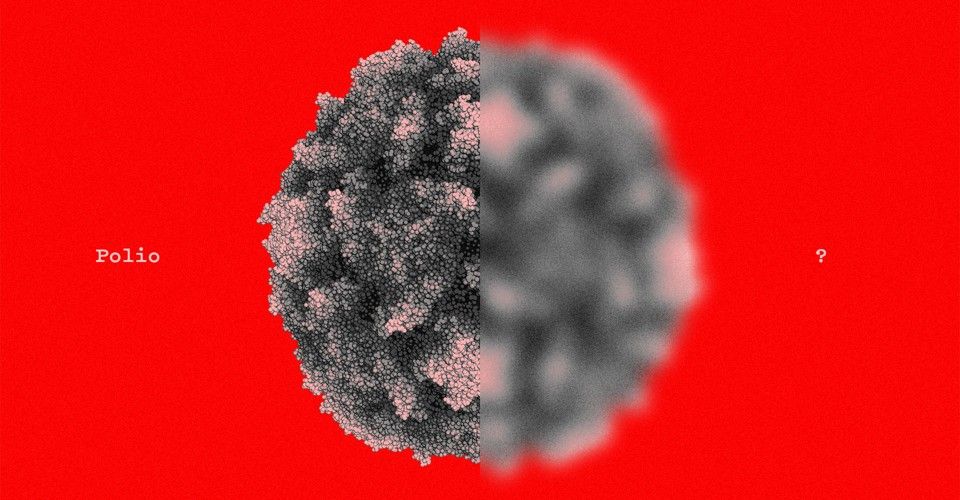A man who relied on a wheelchair for 10 years was able to walk and dance after receiving his stem cell transplant.



A common virus seems to be behind a puzzling condition that’s paralyzing children, but uncertainties remain.
A s the summer of 2014 gave way to fall, Kevin Messacar, a pediatrician at Children’s Hospital Colorado, started seeing a wave of children with inexplicable paralysis. All of them shared the same story. One day, they had a cold. The next, they couldn’t move an arm or a leg. In some children, the paralysis was relatively mild, but others had to be supported with ventilators and feeding tubes after they stopped being able to breathe or swallow on their own.
The condition looked remarkably like polio—the viral disease that is on the verge of being eradicated worldwide. But none of the kids tested positive for poliovirus. Instead, their condition was given a new name: acute flaccid myelitis, or AFM. That year, 120 people, mostly young children, developed the condition across 34 states. The cases peaked in September and then rapidly tailed off.

https://paper.li/e-1437691924#/
Solar panels might be the energy source of the future, but they also create a problem without an easy solution: what do we do with millions of panels when they stop working?
In November 2016, the Environment Ministry of Japan warned that the country will produce 800,000 tons of solar waste by 2040, and it can’t yet handle those volumes. That same year, the International Renewable Energy Agency estimated that there were already 250,000 metric tons of solar panel waste worldwide and that this number would grow to 78 million by 2050. “That’s an amazing amount of growth,” says Mary Hutzler, a senior fellow at the Institute for Energy Research. “It’s going to be a major problem.”
Usually, panels are warrantied for 25 to 30 years and can last even longer. But as the solar industry has grown, the market has been flooded with cheaply made Chinese panels that can break down in as few as five years, according to Solar Power World editor-in-chief Kelly Pickerel.

Prime Minister Narendra Modi’s administration now is pivoting toward promoting EVs in public transportation and fleet operations – primarily, two- and three-wheelers, taxis and buses. The Ministry of Finance is finalizing a plan to spend about 40 billion rupees ($600 million) in the next five years to improve the nation’s charging infrastructure and subsidize e-buses.
An electric-vehicle revolution is gaining ground in India, and it has nothing to do with cars.
The South Asian nation is home to about 1.5 million battery-powered, three-wheeled rickshaws – a fleet bigger than the total number of electric passenger cars sold in China since 2011. But while the world’s largest auto market dangled significant subsidies to encourage purchases of battery-powered cars, India’s e-movement hardly got a hand from the state.
Rather, drivers of the ubiquitous three-wheelers weaving through crowded, smoggy streets discovered that e-rickshaws are quieter, faster, cleaner and cheaper to maintain than a traditional auto rickshaw. They also are less strenuous than cycle rickshaws, which require all-day peddling. So with more rides possible in a day, the e-rickshaws are proving more lucrative.

Rocket scientists are planning to suspend a man-made moon bright enough to reduce the need for streetlamps.
In the Sichuan city of Chengdu, Chinese rocket scientists are planning to suspend a man-made moon bright enough to reduce the need for streetlamps.
It’s exactly that kind of ingenuity that has helped the world’s most populous nation churn out new billionaires at a prodigious clip, according to John Mathews, head of ultra-high net worth in the Americas for UBS Group AG.
Take a ride through Orion’s Nebula.

Despite the simplicity of their visual system, fruit flies are able to reliably distinguish between individuals based on sight alone. This is a task that even humans who spend their whole lives studying Drosophila melanogaster struggle with. Researchers have now built a neural network that mimics the fruit fly’s visual system and can distinguish and re-identify flies. This may allow the thousands of labs worldwide that use fruit flies as a model organism to do more longitudinal work, looking at how individual flies change over time. It also provides evidence that the humble fruit fly’s vision is clearer than previously thought.
In an interdisciplinary project, researchers at Guelph University and the University of Toronto, Mississauga combined expertise in fruit fly biology with machine learning to build a biologically-based algorithm that churns through low-resolution videos of fruit flies in order to test whether it is physically possible for a system with such constraints to accomplish such a difficult task.
Fruit flies have small compound eyes that take in a limited amount of visual information, an estimated 29 units squared (Fig. 1A). The traditional view has been that once the image is processed by a fruit fly, it is only able to distinguish very broad features (Fig. 1B). But a recent discovery that fruit flies can boost their effective resolution with subtle biological tricks (Fig. 1C) has led researchers to believe that vision could contribute significantly to the social lives of flies. This, combined with the discovery that the structure of their visual system looks a lot like a Deep Convolutional Network (DCN), led the team to ask: “can we model a fly brain that can identify individuals?”
Human organs may one day be grown in space.
In 2016, the University of the Philippines and the nation made history with the release of Diwata-1, the first ever microsatellite designed and built by Filipinos. On October 29, 2018, the PHL-Microsat team will make history once more with the release of Diwata-2—its more technically advanced sibling—from the Tanegashima Space Center in Japan.
To reserve your slots for the live viewing of this historic launch at the GT Toyota Auditorium, UP Diliman, visit: https://bit.ly/2yU4hg3. Program starts at 11:00 AM. The event is free and open to the public.
Whether it’s left there or right here… the tactics and destination look pretty much the same to me…
China is the world leader in facial recognition technology. Discover how the country is using it to develop a vast hyper-surveillance system able to monitor and target its ethnic minorities, including the Muslim Uighur population.
Click here to subscribe to The Economist on YouTube: https://econ.st/2xvTKdy
Improving lives, increasing connectivity across the world, that’s the great promise offered by data-driven technology — but in China it also promises greater state control and abuse of power.
This is the next groundbreaking development in data-driven technology, facial recognition. And in China you can already withdraw cash, check in at airports, and pay for goods using just your face. The country is the world’s leader in the use of this emerging technology, and China’s many artificial intelligence startups are determined to keep it that way in the future.